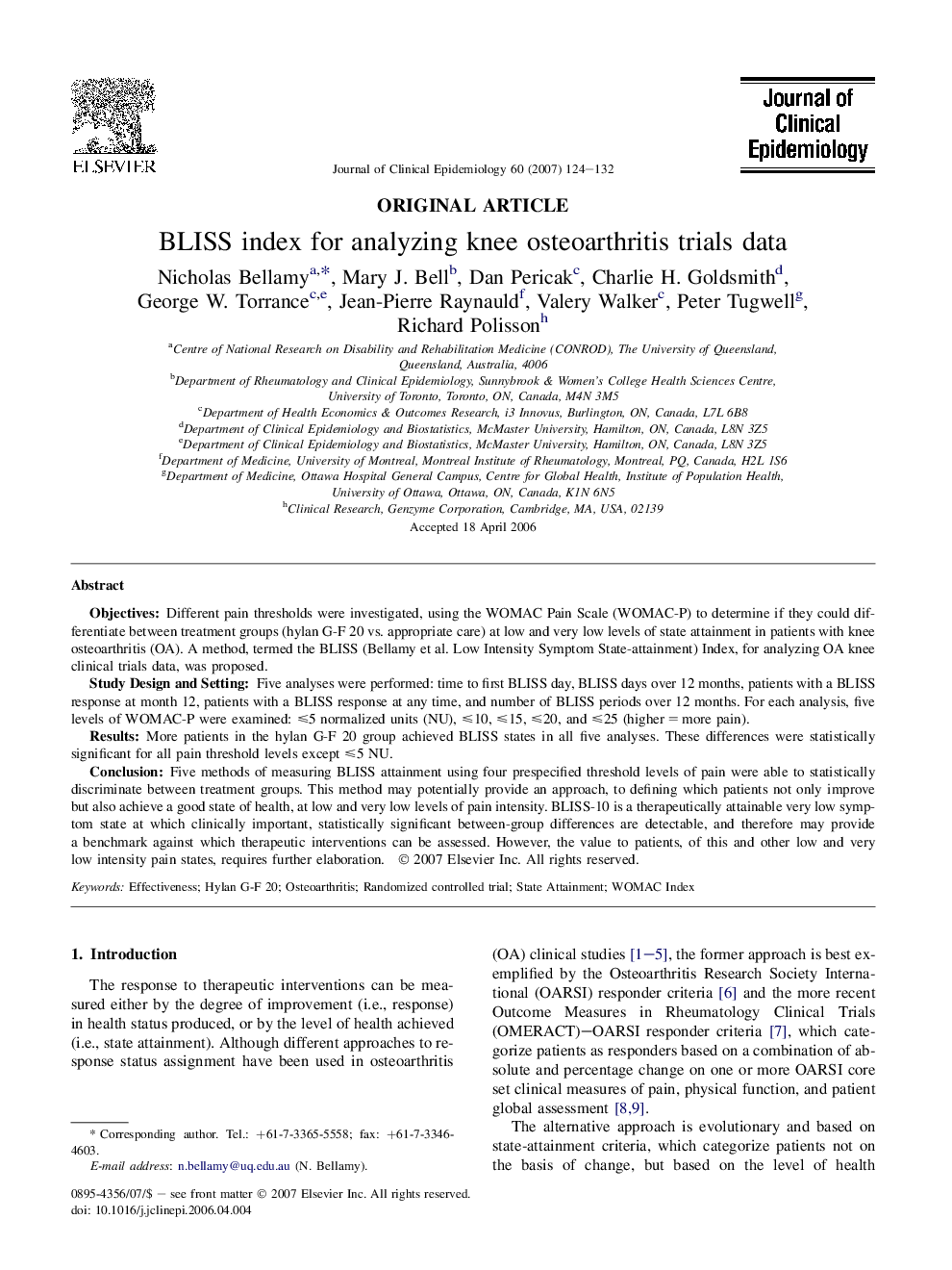| Article ID | Journal | Published Year | Pages | File Type |
|---|---|---|---|---|
| 1083251 | Journal of Clinical Epidemiology | 2007 | 9 Pages |
ObjectivesDifferent pain thresholds were investigated, using the WOMAC Pain Scale (WOMAC-P) to determine if they could differentiate between treatment groups (hylan G-F 20 vs. appropriate care) at low and very low levels of state attainment in patients with knee osteoarthritis (OA). A method, termed the BLISS (Bellamy et al. Low Intensity Symptom State-attainment) Index, for analyzing OA knee clinical trials data, was proposed.Study Design and SettingFive analyses were performed: time to first BLISS day, BLISS days over 12 months, patients with a BLISS response at month 12, patients with a BLISS response at any time, and number of BLISS periods over 12 months. For each analysis, five levels of WOMAC-P were examined: ≤5 normalized units (NU), ≤10, ≤15, ≤20, and ≤25 (higher = more pain).ResultsMore patients in the hylan G-F 20 group achieved BLISS states in all five analyses. These differences were statistically significant for all pain threshold levels except ≤5 NU.ConclusionFive methods of measuring BLISS attainment using four prespecified threshold levels of pain were able to statistically discriminate between treatment groups. This method may potentially provide an approach, to defining which patients not only improve but also achieve a good state of health, at low and very low levels of pain intensity. BLISS-10 is a therapeutically attainable very low symptom state at which clinically important, statistically significant between-group differences are detectable, and therefore may provide a benchmark against which therapeutic interventions can be assessed. However, the value to patients, of this and other low and very low intensity pain states, requires further elaboration.
